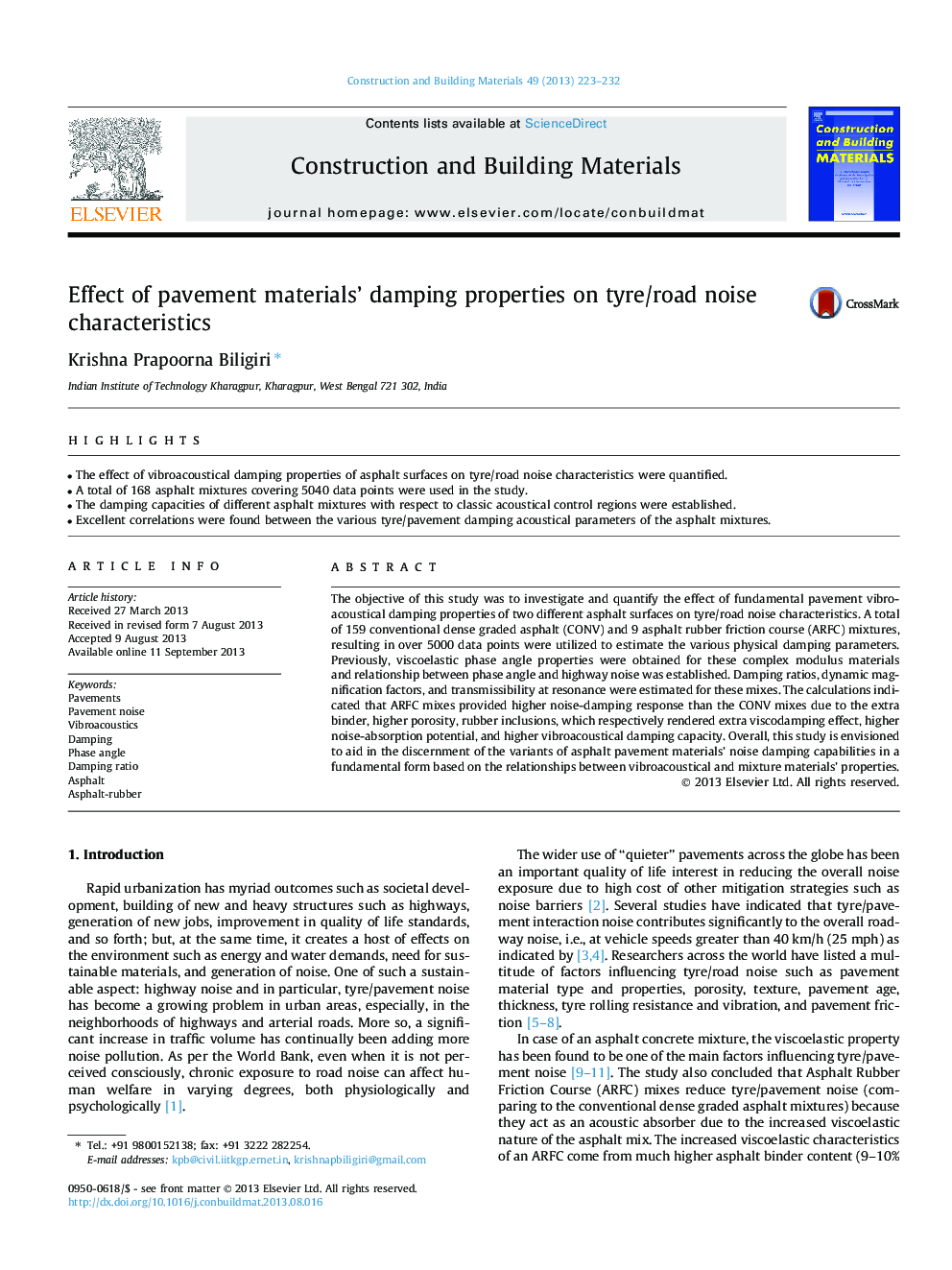| Article ID | Journal | Published Year | Pages | File Type |
|---|---|---|---|---|
| 6724764 | Construction and Building Materials | 2013 | 10 Pages |
Abstract
The objective of this study was to investigate and quantify the effect of fundamental pavement vibroacoustical damping properties of two different asphalt surfaces on tyre/road noise characteristics. A total of 159 conventional dense graded asphalt (CONV) and 9 asphalt rubber friction course (ARFC) mixtures, resulting in over 5000 data points were utilized to estimate the various physical damping parameters. Previously, viscoelastic phase angle properties were obtained for these complex modulus materials and relationship between phase angle and highway noise was established. Damping ratios, dynamic magnification factors, and transmissibility at resonance were estimated for these mixes. The calculations indicated that ARFC mixes provided higher noise-damping response than the CONV mixes due to the extra binder, higher porosity, rubber inclusions, which respectively rendered extra viscodamping effect, higher noise-absorption potential, and higher vibroacoustical damping capacity. Overall, this study is envisioned to aid in the discernment of the variants of asphalt pavement materials' noise damping capabilities in a fundamental form based on the relationships between vibroacoustical and mixture materials' properties.
Related Topics
Physical Sciences and Engineering
Engineering
Civil and Structural Engineering
Authors
Krishna Prapoorna Biligiri,
